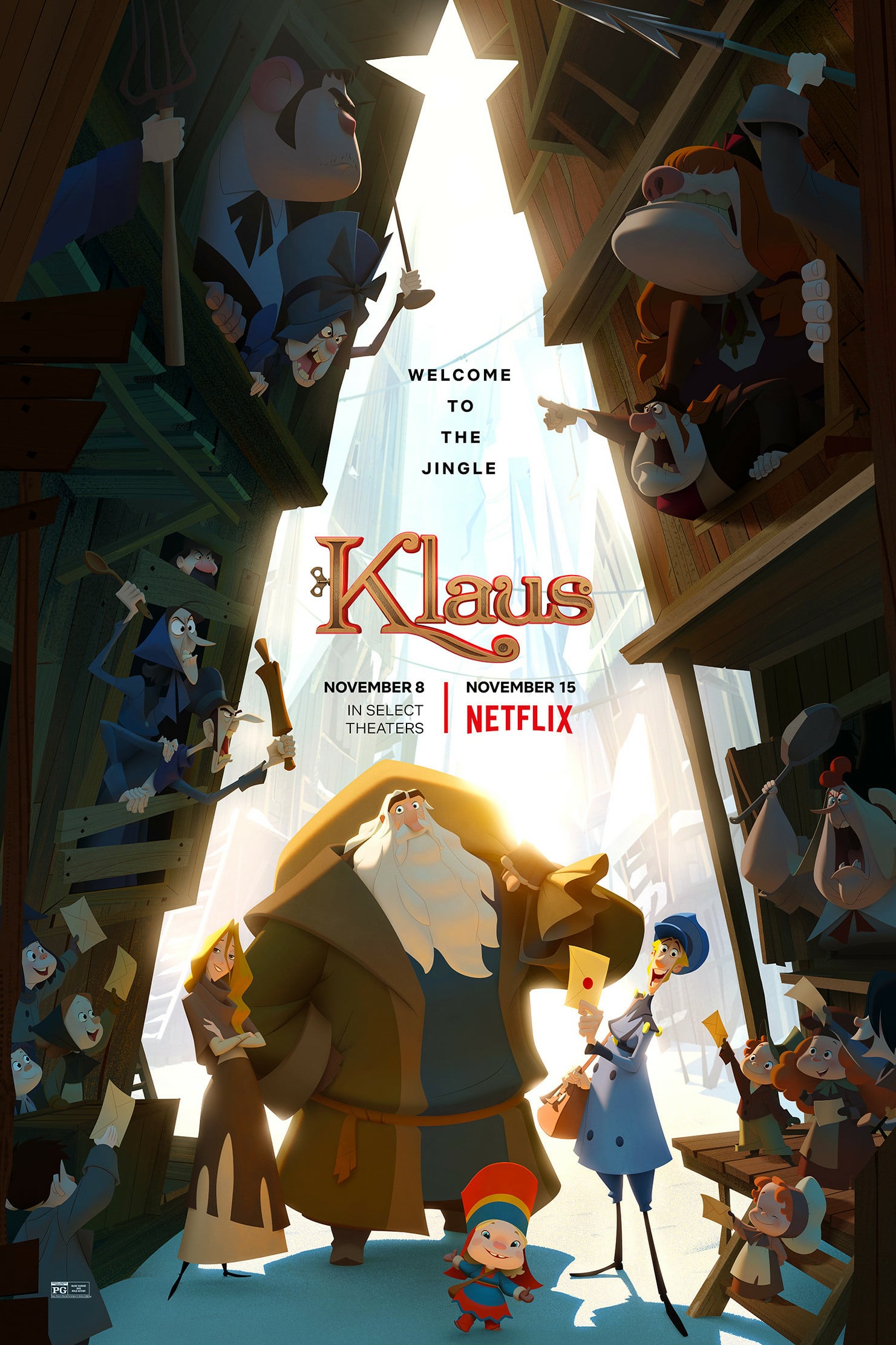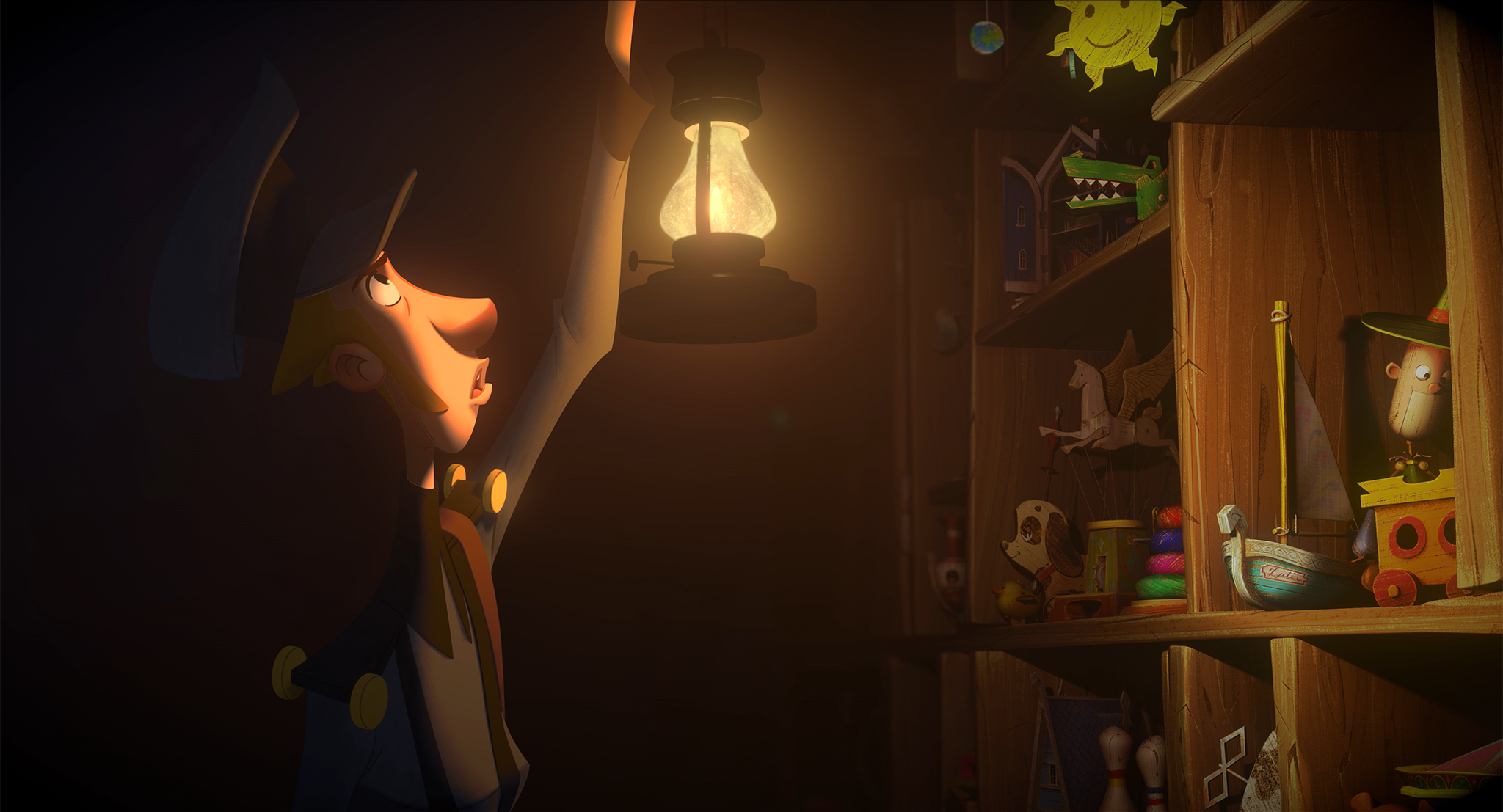Our resident animation expert will be looking at several of the movies vying for a nomination in Best Animated Feature. First up, a Christmas movie.
 by Tim Brayton
by Tim Brayton
The new animated feature Klaus is being pulled in a lot of directions. It's the directorial debut of Sergio Pablos, a former Disney animator who splits time between Hollywood projects (as screenwriter, he created the Despicable Me franchise) and nurturing his own company, SPA Studios, based in his hometown of Madrid. It's also the first animated feature produced by Netflix, which has been making sure to emphasize that fact in all of its marketing efforts. And it's not just any old Netflix production: this is part of the streaming service's increasingly deep bench of Christmas-themed movies.
It's hard not to think about this while one is watching the movie. Depending on how you approach it, Klaus is either a masterpiece, or a frankly irritating collection of tin-eared dialogue, odd casting choices, and dated clichés of kids' movie screenwriting...

The film centers on Jesper (Jason Schwartzman), the spoiled adult son of a dynasty of wealthy postmasters in Scandinavia sometime in the 19th Century. His father, having run out of patience with his son's fecklessness, exiles the young man to Smeerensburg, a remote town on a miserable northern island, with a hideous ultimatum: establish a thriving post office branch in a town that has firmly resisted it to this point, or be disinherited and thrown out on the street. Once on the island, Jesper finds himself in the middle of a generations-long feud, and the only people who'll talk to him at all are Alva (Rashida Jones), the resentful "teacher" living in a long-abandoned schoolhouse, and Klaus (J.K. Simmons), a carpenter and toy maker who lives in the woods at the extreme northern end of the island. A few misadventures later, Jesper has realised that his best shot at getting the post office on its feet is to encourage the local kids to send letters to Klaus asking for one of the hundreds of handcrafted toys cluttering up his workshop, and as the two men distribute them, the kids themselves start adding details based on misunderstandings and half-seen evidence of Jesper's passage: flying reindeer, coal if you're naughty, things of that nature.
So anyway, it's a Santa Claus origin story, which is the best thing about it. The depiction of traditions growing out of random occurrences is presented with a decent quantity of wit and respect for the viewer's intelligence: the film doesn't waste much time spelling out things we could figure out for ourselves. The worst things about it are almost everything else, from the relentless boilerplate conception of Jesper and his inevitable softening as his actions end up making the town a better place to live, to the relentlessly anachronistic sarcasm that makes up most of the film's sense of humor. It feels like the most generic animation screenplay of the 1990s exhumed and updated only with a couple of glancing references to e-mail. It's not that this is necessarily "bad," so much as is it is hopelessly uninspired and lifeless, generally cute and sometimes grating and never surprising.
That's if we're watching it as a Netflix Christmas movie.
If, on the other hand, we look at this as Pablos's much-loved and fussed-over baby, and an earnest attempt to get SPA on the international map by doing something really bold and innovative with the medium, well, that's where we get into the aforementioned "masterpice" territory.

Simply put, Klaus looks like nothing else out there. The film is a miraculous, unclassifiable hybrid of different kinds of animation, but the impulse comes from Pablos's time at Disney in the 1990s, where he honed his skills at the very particular kind of hand-drawn character animation perfected by that studio. Klaus began its life as an attempt to capture the unique strengths of that style – mostly the squishy, highly-expressive faces of Disney characters, with their huge, appealing saucer-shaped eyes – while taking advantage of the wide assortment of techniques enabled by 3-D digital animation techniques. If you recall the ballroom scene from Beauty and the Beast in 1991, you might remember how the hand-drawn characters seem to float against the computer-generated room; Klaus suggests what every animated film might look like at this point if the intervening 28 years had been spent trying refine that problem until there was no longer any visual distinction between characters and their environments. Heretofore unseen digital painting techniques have been applied to the hand-drawn characters to give them three-dimensional textures, while they've been virtually "lit" with an eye to preserving their painted qualities rather than simply making them look like 3-D models under a flashlight.
The tech nerd inside me doesn't need more than that to be impressed, but of course the only reason this matters is the effect it has on the viewer. And that effect is considerable. The painting and design in the film gives it the look of a cherished holiday picture book, richly colored and detailed to evoke a magical northern neverland of hazy and snow and trees, and eccentric buildings to house eccentric-looking people.

The bleeding-edge technique in bringing that design to animated life allows Pablos and his collaborators to inject the film with a freedom of movement that makes the world feel full and alive and physically present. It's an approach that results in a great leap forward for animation almost as impressive as last year's Spider-Man: Into the Spider-Verse, finding a way to make nostalgia look as fresh and new as anything to have come out this year. Netflix is pushing hard for the film to earn a Best Animated Feature Oscar nomination, and it would be richly earned: fix the glaring problems with the screenplay, and this would be a contender for the title of best animated film of the decade, not just the year.
More on the Animated Contenders
Frozen 2
This Magnificent Cake
Missing Link (Interview)
White Snake
Ne Zha
I Lost My Body
How To Train Your Dragon: The Hidden World
The 32 Eligible Films
Current Predictions